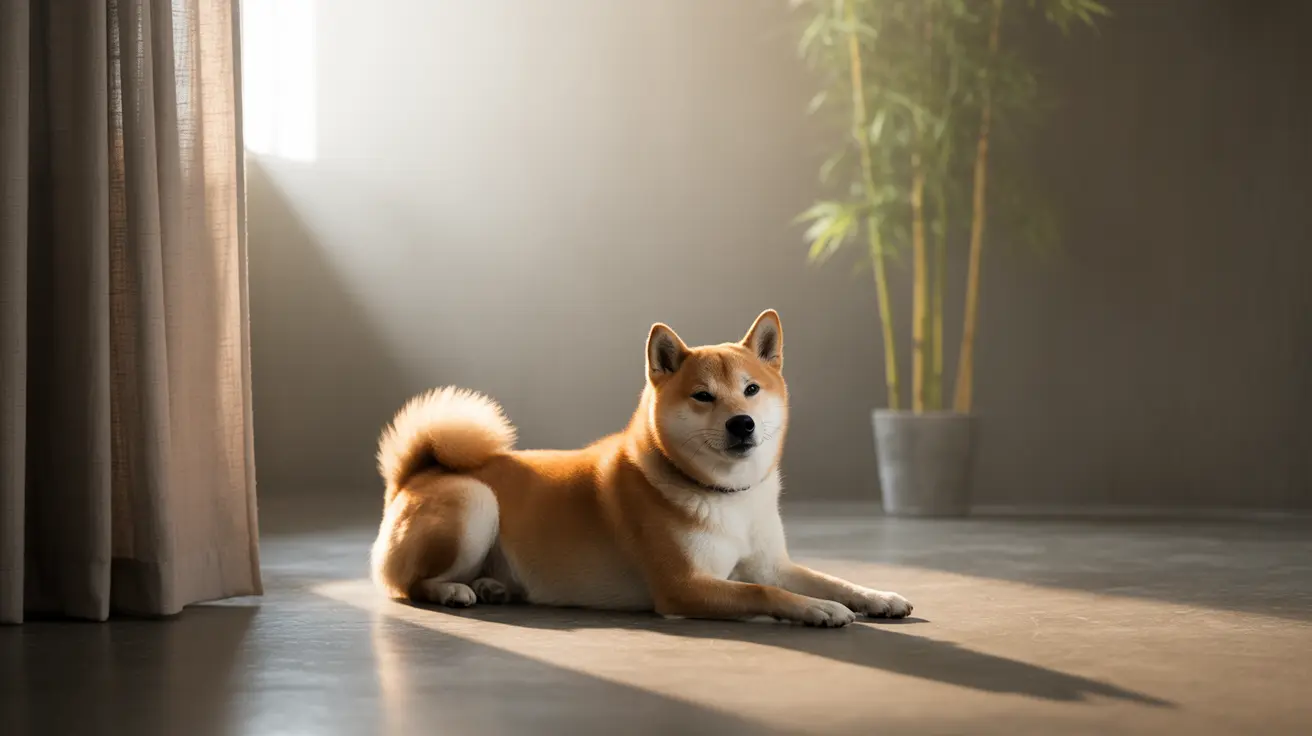Introduction
Have you ever wondered why your dog sits alone in another room? This common behavior can leave pet owners feeling concerned or confused about their furry friend's wellbeing. While dogs are known for their social nature and pack mentality, there are numerous reasons why they might seek solitude. Understanding these motivations can help you better support your pet's needs and know when this behavior might signal something requiring attention.
Let's explore the various reasons behind this behavior and learn when it's normal versus when it might indicate a need for intervention.
Natural Reasons for Seeking Solitude
Personal Space and Comfort
Just like humans, dogs sometimes need their own space to relax and decompress. Many dogs naturally seek out quiet areas where they can rest undisturbed, especially after periods of high activity or social interaction.
Some breeds are particularly known for their independent nature, making them more likely to spend time alone. This includes breeds like Shiba Inus, Chow Chows, and Afghan Hounds, who often value their personal space more than other breeds.
Temperature and Environmental Preferences
Dogs may choose specific rooms based on temperature, lighting, or comfort level. They might prefer a cool tile floor in summer or a sunny spot by a window in winter. Some dogs select rooms with better ventilation or those that offer a strategic view of their surroundings.
Health-Related Reasons
Physical Discomfort
Sometimes, a dog sitting alone can indicate physical discomfort or illness. If this behavior is sudden and accompanied by other symptoms like lethargy, changes in appetite, or difficulty moving, it's important to consult a veterinarian.
Age-Related Changes
Senior dogs often require more rest and may seek quiet spaces away from household activity. This can be perfectly normal, though significant behavioral changes should always be evaluated by a professional.
Emotional and Behavioral Factors
Anxiety and Stress
Dogs might retreat to another room when feeling anxious or overwhelmed. Common triggers include loud noises, unfamiliar visitors, or changes in household routine. This self-imposed isolation can be their way of coping with stress.
Overstimulation
Modern households can be busy and noisy places. Your dog might seek refuge in a quieter room when feeling overwhelmed by:
- Loud television or music
- Active children
- Multiple visitors
- Other pets
- Household activities
When to Be Concerned
While some alone time is normal, certain signs warrant attention:
- Sudden change in behavior
- Excessive isolation
- Loss of interest in normal activities
- Signs of depression or anxiety
- Physical symptoms or changes in eating habits
Creating a Positive Environment
To support your dog's need for occasional solitude while ensuring their wellbeing:
- Designate a quiet space with comfortable bedding
- Respect their need for alone time
- Maintain consistent daily routines
- Provide regular exercise and mental stimulation
- Keep their favorite toys accessible
Frequently Asked Questions
Why does my dog suddenly start sitting alone in another room?
Sudden changes in behavior could indicate stress, illness, or response to environmental changes. If the behavior is new, monitor for other symptoms and consult a veterinarian if concerned.
Could my dog sitting alone be a sign of anxiety or stress?
Yes, isolation can be a sign of anxiety or stress, especially if accompanied by other symptoms like panting, pacing, or changes in appetite. Professional help may be needed if anxiety is suspected.
When should I worry if my dog prefers to sit alone in a separate room?
Worry if this behavior is sudden, excessive, or accompanied by other behavioral or physical changes. Any significant deviation from your dog's normal behavior warrants attention.
How can I help my dog if they isolate themselves due to separation anxiety?
Address separation anxiety through gradual desensitization, creating a safe space, maintaining routines, and considering professional behavioral training. Consult with a veterinarian for severe cases.
Are some dog breeds more likely to sit alone because of their personality?
Yes, certain breeds are naturally more independent and may prefer solitude. This includes breeds like Shiba Inus, Chow Chows, and some terrier breeds, though individual personality also plays a significant role.
Conclusion
While dogs sitting alone in another room can be perfectly normal behavior, understanding the underlying reasons helps ensure your pet's wellbeing. By recognizing when this behavior is natural versus when it might signal a problem, you can better support your furry friend's physical and emotional needs.






